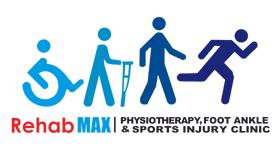MECHANICAL LOW BACK PAIN

Mechanical low back pain refers to back pain that arises intrinsically from the spine, intervertebral discs, or surrounding soft tissues. This includes lumbosacral muscle strain, disk herniation, lumbar spondylosis, spondylolisthesis, spondylolysis, vertebral compression fractures, and acute or chronic traumatic injury.
Low back pain (LBP) is the fifth most common reason for physician visits, which affects nearly 60-80% of people throughout their lifetime. The lifetime prevalence of low back pain is reported to be as high as 84%, and the prevalence of chronic low back pain is about 23%, with 11-12% of the population being disabled by low back pain. In the 2010 Global Burden of Disease study, the global age-standardized point prevalence of LBP (from 0 to 100 years of age) was estimated to be 9.4%.
Patients generally present with a history of an inciting event that produced immediate low back pain. The most commonly reported histories include the following:
- Lifting and/or twisting while holding a heavy object (e.g., box, shopping bag, etc. )
- Operating pneumatic tools (e.g., drill machines)
- A sedentary lifestyle that involves Prolonged sitting (e.g., desk job, long-distance truck driving)
- Falls
- Mechanical low back pain is usually cyclic, often referred to as the buttocks and thighs
- Morning stiffness or pain is common
- The symptoms are usually worsened by activity and improved partially by rest
- Physical activity, particularly bending, extending, twisting, and lifting, commonly aggravates the symptoms, whereas restriction of pain-producing activities results in improvement at least temporarily.
- Pain becomes worse over the course of the day and is relieved by the change of position
- Typical physical findings are nonspecific, including a restricted range of motion of the spine, tight hamstring muscles, paravertebral muscle spasms, muscular trigger points, tenderness, and aggravation of symptoms on flexion or extension, and straight leg raising tests.
Treatment:
- According to recent advances and research, movement is good for your back
- Corrective exercises for postural deviations helps strengthen the muscles of and around the spine
- Tight hip and back muscles can impede the mobility of the spine, as muscles are connected like a chain in our body, thus stretching exercises help to
- maintain good mobility not only at the spine but at all joints as well.
- Dry needling, soft tissue release, and taping can be used to relieve pain and provide additional support to the muscles of the back.
- Taking regular breaks at work for those with sedentary jobs and ergonomic changes for e.g. adjustment of chair and desk suitable for one’s body structure, correct techniques of lifting weight, etc. as per the ergonomic guidelines, prove effective in preventing recurrence of pain episodes.
- Basic strength requires 6-8 weeks to build, post which, functional exercises can be taught, based on the type of occupational or sporting demands the individual requires to achieve.

